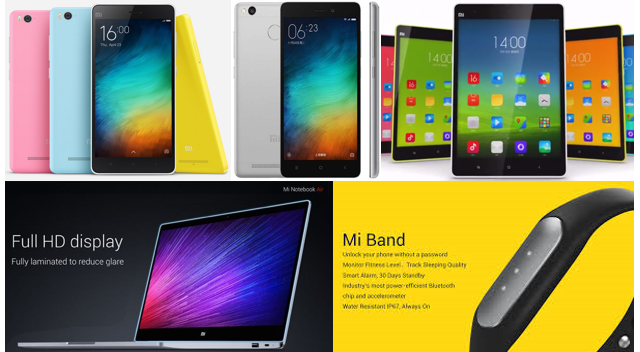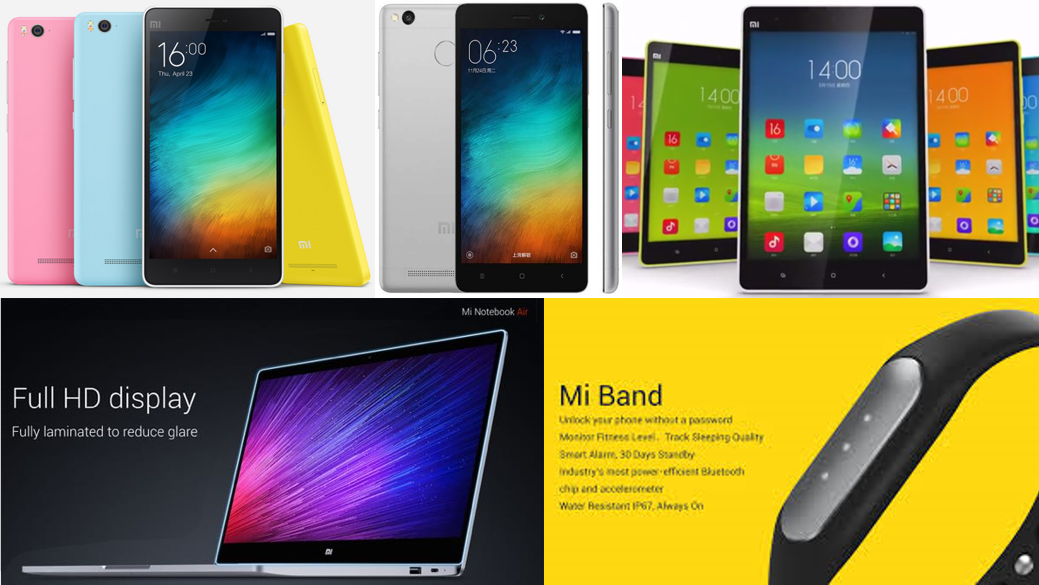
Unicorns 4/229 – Xiaomi
Xiaomi
Founder: Lei Jun
Key people: Lei Jun (CEO), Lin Bin (林斌) (President)
Number of employees: Approximately 8,100
Xiaomi Inc. (Chinese Mandarin: [ɕjàumì], Chinese: 小米科技; pinyin: Xiǎomǐ Kējì, literally “millet technology”; English pronunciation: /ˌʃiaʊˈmiː/ or /ʃiˌaʊˈmiː/) is a privately owned Chinese electronics company headquartered in Beijing. It is the world’s 5th largest smartphone maker in 2015. Xiaomi designs, develops, and sells smartphones, mobile apps, laptops, and related consumer electronics.
Since the release of its first smartphone in August 2011, Xiaomi has gained market share in mainland China and expanded into developing a wider range of consumer electronics, including a smart home (IoT) device ecosystem. The company’s founder and CEO is Lei Jun, China’s 23rd richest person according to Forbes. The company sold over 60 million smartphones in 2014.
The company has over 8,000 employees, mainly in mainland China, Bangladesh, India, Malaysia, and Singapore, and is expanding to other countries such as Indonesia, the Philippines, South Africa, and Brazil.
According to IDC, in October 2014 Xiaomi was the third largest smartphone maker in the world, following Samsung and Apple Inc., and followed by Lenovo and LG. Xiaomi became the largest smartphone vendor in China in 2014, having overtaken Samsung, according to an IDC report.
Xiaomi is the world’s 4th most valuable technology start-up after it received US$1.1 billion funding from investors, making Xiaomi’s valuation more than US$46 billion. Xiaomi entered the Bangladeshi market via Solar Electro Bangladesh Limited and entered the Indian market in July 2014 via Flipkart.com. In 2016 Xiaomi gave stiff competition to Micromax within the Indian market.
History
Early beginnings
Xiaomi was co-founded by eight partners on 6 April 2010. In the first round of funding, institutional investors includ ed Temasek Holdings, a Singaporean government-owned investment company, the Chinese venture capital funds IDG Capital and Qiming Venture Partners, and mobile processor developer Qualcomm. On 16 August 2010, Xiaomi officially launched its first Android-based firmware MIUI. The Xiaomi Mi1 smartphone was announced in August 2011. It was shipped with Xiaomi’s MIUI firmware which is based on Android and resembles Samsung’s TouchWiz and Apple’s iOS. The device could also be equipped with stock Android.
2012-2014
In August 2012 Xiaomi announced the Xiaomi Mi2 smartphone. The phone was powered by Qualcomm’s Snapdragon S4 Pro APQ8064, a 1.5 GHz quad-core Krait chip featuring with 2 GB of RAM and the Adreno 320 GPU. The company said on 24 September 2013 that the company had sold over 10 million Mi2 devices over the preceding 11 months. Mi-2 smartphones were sold by wireless phone vendor Mobicity in Australia, Europe, New Zealand, the UK and the US. On 5 September 2013, Xiaomi CEO Lei Jun announced plans to launch an Android-based 47-inch 3D-capable Smart TV, which will be assembled by Sony TV manufacturer Wistron Corporation of Taiwan. The company explained the choice as to take advantage of Wistron’s skill as a supplier of Sony. In September 2013, Xiaomi announced its Mi3 phone, with a version powered by the Snapdragon 800 (MSM8974AB) and another by NVIDIA’s Tegra 4 chipset., a 2.3 GHz quad-core Krait chip featuring with 2 GB of RAM and the Adreno 330 GPU. On 25 September 2013, Xiaomi announced plans to open its first service center in Beijing. By October 2013 Xiaomi was reported as the fifth-most-used smartphone brand in China. In 2013 it sold 18.7 million smartphones, and 26.1 million in the first half of 2014.
In 2014 Xiaomi announced its expansion outside China, with their first stop in Singapore. The international headquarters, which will coordinate all activities including future product launches in the region, will also be set up there. Xiaomi’s Redmi and Mi3 phone were released in Singapore on 21 February – 7 March 2014. On 7 March, Xiaomi Mi3 batches sold out within 2 minutes of the opening day sale in Singapore. Following Singapore, the company opened in Malaysia, Philippines and India, and had plans to enter Indonesia, Thailand, Russia, Turkey, Brazil and Mexico in the following months. On 17 March 2014, Redmi Note phablet (known as HongMi Note in some Asian markets) was announced by Xiaomi CEO Lei Jun. The Redmi Note has a 5.5-inch HD display with OGS technology and an octa-core processor from MediaTek. There are two variants of the Redmi Note, one with 1 GB of RAM and 8 GB of internal storage; and the other with 2 GB of RAM and 16 GB of internal storage. It was made available for pre-order on 19 March exclusively through a mobile application from Tencent. In April 2014 Xiaomi purchased the Internet domain mi.com for a record US$3.6 million, the most expensive domain name ever bought in China, replacing xiaomi.com as the official Xiaomi domain. In Q2 2014, Xiaomi shipped 15 million devices, 14 percent of China’s market, while Samsung shipped slightly more than 13 million. By July 2014, it had sold 57.36 million phones. In November 2014 Xiaomi said it would invest US$1 billion in television content building.
In December 2014 Xiaomi completed a round of equity financing led by Hong Kong-based technology fund All-Stars Investment Limited, a fund run by former Morgan Stanley analyst Richard Ji raising over US$1 billion, with a valuation of more than US$45 billion making it one of the most valuable private technology companies in the world.
2015
In April 2015 Xiaomi announced it would make its Mi devices available through two of India’s major e-commerce sites, and through offline retailers for the first time.
On 23 April 2015, Xiaomi CEO Lei Jun and VP Hugo Barra came together to announce a new smartphone named Mi 4i in India, the first phone to be launched in India before any other country. Mi Band was launched in the same event.
On 30 June 2015, Xiaomi announced it expansion into Brazil with the launch of locally manufactured Redmi 2, the first time the company sells a smartphone outside Asia or assembles one outside China.
2016
On 24 February 2016, Xiaomi launched the Mi5, with Qualcomm Snapdragon 820. It has a power-efficient 5.15 inch FullHD 1080p display with a 16-LED backlight technology giving a picture of brightness 600 nits. There are models in black, white and gold cases, and available storage of 32 GB, 64 GB, and 128 GB.
On 10 May 2016, Xiaomi launched the Mi Max, with Qualcomm Snapdragon 650/652 processor. It has a power-efficient 6.4 inch FullHD 1080p display with 342ppi, 4850 mAh battery, 4 GB of RAM, 16 MP back-facing camera, a 5 MP front-facing unit, and a fingerprint sensor. Xiaomi later on launched the Mi Max in India on 30 June 2016.
In July 2016, Chinese artists – Liu Shishi, Wu Xiubo and Liu Haoran became the first ambassadors of Xiaomi’s Redmi series in China.
2017
On 19 April 2017, Xiaomi launched the Mi6, with Qualcomm Snapdragon 835. Xiaomi launched the product with Qualcomm Snapdragon’s latest processor at very low cost competing Samsung’s flagship S8 which cost’s almost double. Xiaomi was known to give the best smartphone in terms of performance and yet again Xiaomi did that again with its latest flagship Mi6.

